
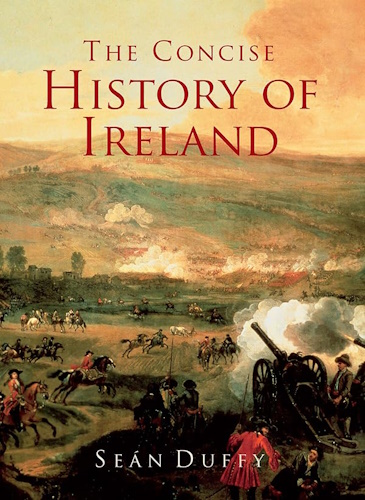
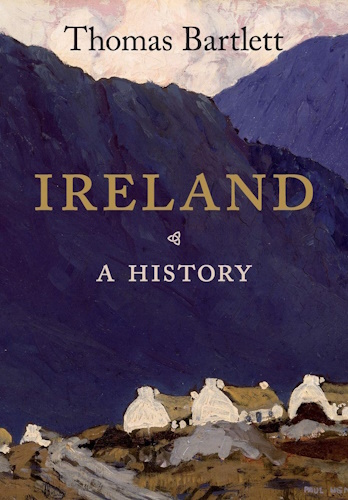
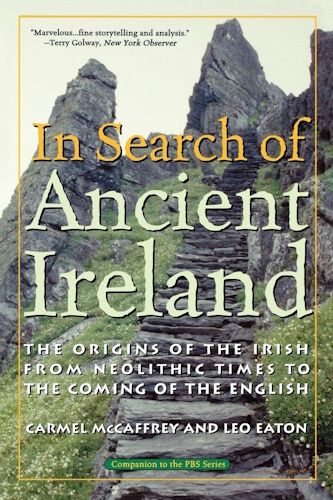


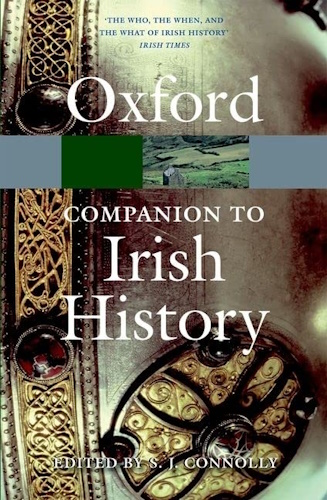
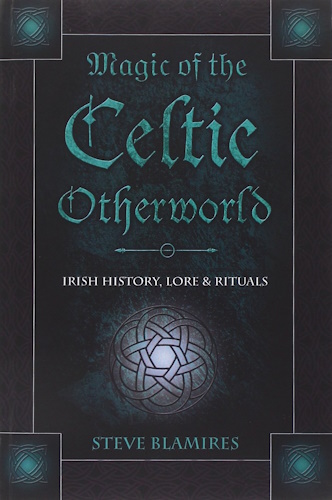
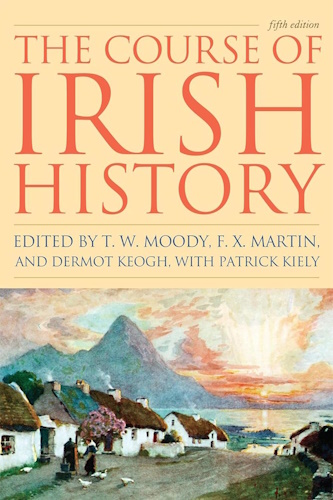
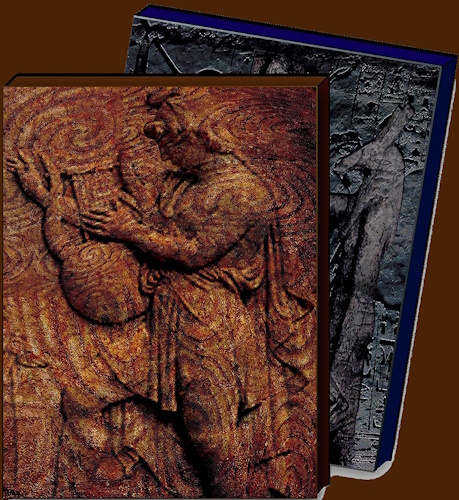
The Rape of Tara
Hill of Kings
Appendix IX to Volume I
of
The Irish Origins of Civilization
by
Michael Tsarion
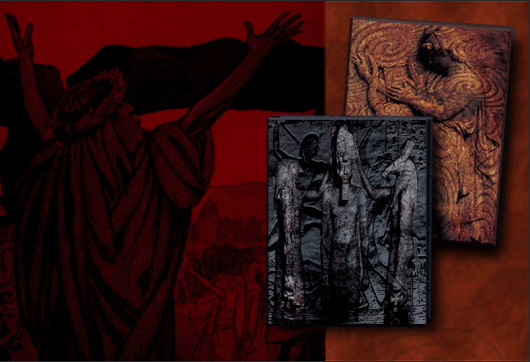
![]()
![]()
The two invasions of Ireland by King Henry were bloody and ruthless culminating in the complete and utter dismantling of Tara to bare Earth and the final destruction of almost all remaining non-Christian Irish texts - George Rawlinson
During his interview with BBC Radio Ulster for the documentary "Tar on Tara" Seamus Heaney, Irish bard and Nobel Laureate says: "Tara means something equivalent to me to what Delphi means to the Greeks or maybe Stonehenge to an English person, or Nara in Japan, which is one of the most famous sites in the world. It's a word that conjures an aura - it conjures up what they call in Irish dúchas, a sense of belonging, a sense of patrimony, a sense of an ideal, an ideal of the spirit if you like, that belongs in the place and if anywhere in Ireland conjures that up - it's Tara - it's a mythical site of course. I mean the traces of Tara are in the grass, are in the earth….they are about origin, they're about beginning, they're about the mythological, spiritual source - a source and a guarantee of something old in the country and something that gives the country its distinctive spirit" ...Byron Ballard, Village Witch of Asheville, NC and member of the Irish diaspora agrees with Heaney's assessment of the spiritual importance of Tara. "The loss of sacred landscape is as devastating to a culture as the loss of language. There is an ineffable quality that encompasses our mythic origins, our history and our ancestors and is a vital part of cultural identity. As we race headlong into the abyss of globalization, we are willfully destroying those markers that identify who we are as a people and as a cultural entity. That Ireland--who faced (and still faces) the loss of her living language and the induced diaspora of her people--could willingly endorse this short-sighted and suicidal rape of her innermost self in the name of progress is breathtaking. The spiritual implications speak volumes about the loss of Ireland's great soul" - Caroline Kenner (The Ongoing Saga of Royal Tara and the Toll Road)
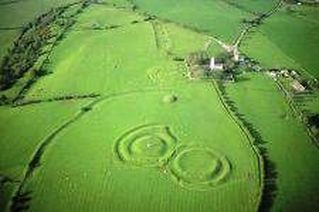
The Hill of Tara
Dated to approximately 2,000 years BC, it was the capital of the Celtic kings of Ireland, but was probably a site of importance in pre-Celtic times. It was named after the Arya and their Earth Goddess Eri or Ari. In Hebrew and Egyptian the word Tara means gateway or portal. It was also known as Drumcain (or "Hill of the Serpents").
The Tara Skryne Complex
In May 2007 as part of the excavations for the M3 motorway the archaeologists on the site of Lismullen in the Tara Skryne Complex found an ancient Henge; a ritual ceremonial site dating back to prehistoric times.
Immediately this site was declared a National Monument and despite the outcry generated by it, the then minister for the environment, Dick Roche, ordered its removal from the Valley in order to continue with the construction of the controversial 7 km of the M3 across the Valley.
The orientation of this Henge seems to be pointing to Newgrange, which may support the hypothesis that the whole Tara Skryne Valley was a large complex, whose sites cannot be interpreted in isolation. If protected as it should be, the whole Valley could be designated a World Heritage Park, a place for the benefit and education of humanity and the expansion of Ancient Irish Civilization.
To endanger such a place is a symptom of the greed, corruption and disrespect being shown for nature, people and our environment.
The solution to this controversy is to re-route 7 km of the double-tolled Motorway, but it seems that vested interests in this area have been preventing the consideration of any alternatives.
Ancient Burial Ground Destroyed
An ancient burial ground near the Hill of Tara (Ireland) - said to be more impressive than the national monument discovered in recent months - has been destroyed. Bulldozers razed the Baronstown site to allow construction work on the controversial M3 motorway in Co Meath continue. Protesters claimed that the site, a Bronze Age settlement described as a 'multi-period archaeological complex' by archaeologist Joe Fenwick, was destroyed overnight after machinery moved in. They claim earth movers stripped the site at about 4am on Wednesday 4th July. When protesters arrived at 6am the entire site had been completely razed to the ground.
The complex dates back 4,000 years and the Campaign to Save Tara group claimed it had been recommended for national monument status by archaeologists working on the M3 project. But former environment minister Dick Roche rejected the application. "That they are destroying our heritage under cover of darkness says it all," campaigner Dr Muireann Ni Bhrolchain said, and repeated a call for construction work to be stopped at Tara until an archaeological committee set up by Environment Minister John Gormley completed its work. The committee is chaired by Conor Newman, an archaeology professor at NUI Galway, and is charged with excavating the newly found National Monument at Lismullen, a few miles from the Baronstown site, prior to it being removed to allow the road to go ahead.
Protesters want the minister to declare the entire Tara Skryne Valley an archaeological conservation area, and re-route the motorway. Michael Canny said the work on the Baronstown site was a disgrace. "If he had taken our advice perhaps another piece of our irreplaceable national heritage would not have been bulldozed." Protesters also claimed daily stand-offs with construction workers at several sites along the route were becoming increasingly tense. In recent weeks, one protester was arrested, but later released.
Opus Dei & the Tara Valley Tragedy
An investigation into the potential connections, motives and interests at play in the development of the M3 motorway: From multinational corporations and financiers to political ambitions and appointments to over-seeing authorities, to local interests and commercial opportunities.
There has been a lot made of the supposed role and intent Opus Dei may have had in facilitating the M3 project. I think their role is very obvious, in the significance of their location of their retreat and head-quarters, and by their silence in having a major road built in their back garden and the benefits it will give them, in addition to the churches silence on the project in general.
As to OD's influence of the financial and construction contracts, that is speculation. However, seen in the international context, parallels and connections can be inferred. On a more local level, OD's role in the instigation, planning and approval of the project, can only be found in conjecture, and should not be overestimated when compared to the other formal and informal, secret or overt networks that exist in Ireland, from the golf course to the GAA, the Knights of St Columbanus to chambers of commerce. Here the forces of vested interest in political, ego and financial fulfillment can be found.
What follows is internet based research that investigates possible motives and connections between parties involved in the M3 project. The research was conducted from the prospective of finding Opus Dei connections. It concludes in noting the influence and interest of Noel Dempsey, minister and local TD.
Opus Dei was formed in Spain before the war, they now has about 87,000 members in more than 80 different countries, about 60% in Europe, mostly Spain, where it is estimated that 20% of the Spanish parliament is made up of OD members. A further 35% of OD membership is found in the Americas. Their agenda was always right wing, capitalist and corporate. Membership of OD is by invitation and usually kept a secret; however members of OD will have a similar profile. Conservative, elitist, devout, pro-life, homophobic, nationalist, right-wing, corporate, professional, influential but very private, avoidance of publicity, rather be judged through deeds, masochistic, strong work ethic, evangelical, philanthropic, drawn to celibacy or married would have very large families with strong family values, friendships would be restricted usually 12 and likely to be other OD members. ODs' network strength comes from operating to all intense and purposes, as a cult
They quickly got involved with the education of future elites. The first subjects taught were law and architecture. Education is central to their agenda, founding the elite IESE business school in Spain and many other universities and establishments connected with universities around the world. By 2005 the "Corporate Works of Opus Dei" have cooperated with other people in setting up a total of 608 social initiatives: schools and university residences (68%), technical or agricultural training centers (26%), universities, business schools and hospitals (6%).
Members of OD, with their right wing indoctrination, groomed and selected through their educational establishments and networks, soon held positions of influence in the corporate world. Inevitably in the post-war, cold-war world their opportunity would come, Spain was a fertile ground. Twenty years after the Spanish Civil War, Franco's isolated economy was in a mess, he asked right-wing economists in the financial sector to help him out, all were members of OD. They turned Spain, with the backing of America, into capitalist based economy. A consequence of this was high unemployment, high national debt leading to a devalued currency; however the corporate sector, mostly banking and construction, flourished. One company that thrived was Ferrovial. The company was founded in 1952 by Rafael del Pino tosupply railway sleepers to Spain's train network, by the time of Franco's death, the company had built much of Spain's infrastructure of rail and tolled roads. The del Pino family still owns 58% of the shares and is among the wealthiest dynasties in the world, with an estimated fortune of £3bn. Rafael del Pino, is thought to be a member of OD, the institute in his name is dedicated to promoting the Spanish language and "building Spain's future generation of leaders", it follows OD morals. He is also on the International Advisory Board of the IESE, the OD Business School. The Spanish economic model, with all its consequences, was copied in South America. Most notable was Argentina, where the policy of developing the corporate sector allowed for representatives of public firms to negotiate flawed contracts with private contractors. Once construction was under way, it would be "discovered" that the original plan had skipped crucial steps, increasing the costs substantially, these costs were paid by the government. The instigator of this policy was OD member Rodolfo Barra, who was justice on the Supreme Court and Minister of Justice under Menem. Flawed contracts and controversial projects that have been resolved in the courts to the contractors favour have not been limited to Argentina. More recently in America there is the Trans-Texas Tollway, in Canada Highway 407 and in Britain the PPP of London Underground, these contracts have Ferrovial as a main contractor.
Franco's death brought a brief hiatus, but then it was the turn of the EU to continue to finance the same Spanish Armada of government/corporate OD partnership, which has given Spain such economic strength. This has allowed Spanish policy to become increasingly expansionist, as they sought to formally seek mergers and alliances in the Spanish speaking world, the Spanish government gave generous tax breaks to facilitate this and South American companies, devalued through recent economic policy, made easy and perhaps though the OD network, ready targets for Spanish expansion. The finance industry led the way with "30.2% of Spanish-Latin American mergers and acquisitions in this sector during 1997." This continued throughout the late 1990's with Grupo Santander's total investment in Latin America estimated at more that $4 billion and Banco Bilbao Vizcaya's (now Banco Bilbao Viscaya Argentaria) at more than $3.79 billion in 1997." Not stopping in the Spanish speaking world, this strength has allowed for increased expansion and acquisitions of the Spanish corporate sector, much in Europe and notably in the UK. Again the focus has been finance, infrastructure, construction and telecoms.
A common thread that can be found in the board rooms of these companies is in the CV's and history of their board members. Many have links with the Department IESE Business School, University of Navarra, Barcelona. Grupo Santander is itself an IESE supporting company. But the IESE is a very established institution, its alumni can be found in many board rooms, including Calyon [Crédit Agricole] of France, but when one finds such cross fertilising between these institutions, such as Javier Santiso, now chief economist for the OECD Development Centre, one has to question what networks are involved. The financial institutions mentioned are funding the M3 project, however the actual influence any OD network might have had is not easy to determine, establishing OD membership is hard enough. But for Ferrovial it is clearer. Apart from Rafael del Pino being an alleged member of OD, Enrique Fuentes, Ferrovial's Head of Market Studies and Analysis Business Unit, is a IESE graduate, while Enrique Díaz-Rato, CEO-Toll Roads & Car Parks Division, General Manager of 407 ETR in Toronto, Canada (Highway 407), Head of Toll Roads in the USA (Trans-Texas Tollway), Canada, Chile and Ireland, is closely associated with the Universidad de los Andes in Chile, a university founded as a corporate work of the apostolate of OD. One could almost be certain that Enrique Díaz-Rato is a key OD link man in the Latin invasion.
Opus Dei & Knights of St. Columbanus
Opus Dei first moved into Ireland in late 1949 when a small task-force of Spaniards established themselves in Dublin. They quickly began recruiting students at UCD in Earlsfort Terrace and the College of Surgeons. At the same time they began to make contacts with right-wing Catholics in the Dublin business and financial world. It is most likely that they formed a very close association with the Knights of St. Columbanus and one would expect to a much lesser extent the Knights of Malta. However it should be noted that there are many different orders within Ireland and the Catholic Church with which alliances could be formed and influence made. Among the Irish founder members were barrister Cormac Burke, medical student; Daniel Cummings and army officer Richard Mulcahy. OD has continued to target the main education establishments of Ireland. At the top of the list is University College Dublin but also The Royal College of Surgeons in Ireland, Trinity College, National University of Ireland, Galway and the University of Limerick. However it is questionable to the extent of OD penetration into Irish society. There are no up-to-date numbers of OD members in Ireland, but a reasonable estimate would be closer to one thousand than two thousand, but that would not include the ‘Cooperators' of Opus Dei, who need not be catholic. It is unlikely OD has penetrated Irish politics anywhere near the same level as they have in Spain, Berti Ahern has said that he will ban members of secret societies from ministerial roles, however it is known that members of the Knights of St. Columbanus have been represented in the Dail, and it is likely that OD or their ‘Cooperators' can be found there also, they must certainly be elsewhere in Irish politics or form part of the mechanics of government and the establishment. Again it is through the law that OD work their way into the establishment.
One high profile member was the ultra conservative and influential first chairman of the Arbitration Board; president of the Law Reform Commission. Professor of Criminal and Constitutional Law at University College Dublin, Justice O'Hanlon. His position at UCD would have given access to Ireland's future leaders and elites. One student of law at UCD was Ciaran Feighery who qualified as a solicitor in 1971. The Feighery family can be found in many parts of the establishment, and are the major shareholders of SIAC, one of the Irelands oldest construction companies. SIAC stated in Cork in 1913 when the company made and laid mastic asphalt, it was known as the South of Ireland Asphalt Company until 1983. Profits dipped to €564,000 in 2001 but rose again to its pre-2001 level of about €4 million at the end of 2002. Almost 70 per cent of the company's €214.68 million turnover in 2002 was transacted in Ireland. The company makes nearly all of its money from civil engineering and specialist building subcontracting work, it has done very well out of the current road building program. Ciaran Feighery is chairman and other family members are on the board, including Hank Fogarty who had previously been with Dublin County Council but now is director of SIAC operations and strategic development of the Civil Engineering Division and in particular the Group's participation in major infrastructural and Public Private Partnership [PPP] projects. Also on the board is one Pat Ahern, weather he is related to Bertie has yet to be established. In so many ways the profile of SIAC matches Ferrovial, they seem well suited partners for the M3 development. Is there an OD link as well?
The justification of the M3 route was made in the planning stage. Two Irish consultant firms led this work. The first was M.C O'Sullivan & Co Ltd can't be touched. As a company it no longer exists as a separate entity, it merged with another in 2005 then merged again beyond recognition in September 2005, its staff form part of RPS Group, Ireland's largest Civil, Structural and Environmental Engineering Consultancy. The Chairman of RPS Consulting Engineers, Mr Kerry O'Sullivan has since been elected President of the Association of Consulting Engineers of Ireland. The other consulting company was JB Barry & Partners. This is another company that has grown and merged over time, and is of so significance that last year they got the Taoiseach to open its new branch office in Cork. The company has also been closely associated with Irish Waterways, the government agency accused of strong OD and Knights of St. Columbanus influence. These consultations would be appointed by the NRA. It is hardly an objective and independent position from the NRA.
It was the NRA board who approve and signed contracts and make appointments. One name of note is Fred Barry, who was appointed Chief Executive of the National Roads Authority in 2005. He leads the NRA team in delivering an investment of up to E10 billion over the next five years. If there is any relation between him and JB Barry it has yet to be established. Also on the board of the NRA is Raymond Potterton, who is a property surveyor, auctioneer, developer and investor based in Navan, Co. Meath, he established his company in 1991 and now, in their own words, dominate the Meath property market. His business partner is Loman Dempsey, brother of Noel Dempsey TD. In November 1998 the NRA moved their road design team into their offices, the lease was extended until November 2000 as they planned Meath's new roads, the N3 must have been part of those plans. The M3 Route Selection reports were published in 2000 and 2001 with the Environmental Impact Statement published in March 2002. In February 2002 Raymond Potterton was appointed to the NRA Board by Mary O'Rourke, although it is said the real influence in that appoint was Noel Dempsey TD, his appointment was just in time to approve and recommend the findings of those reports. Noel Dempsey is a resident of Trim Co. Meath, where Raymond Potterton brother, Thomas Potterton, runs the family business there; established in 1886 now T. E. Potterton Real Estate Alliance, a founding member of Real Estate Alliance, one of Irelands premier property groups with a branch network across the country and very influential in the farm and property auctioneering and sales. Also of note is Dr Michael Potterton is a local historian and archaeologist of some influence. Can it be that the interests of land owners west of Tara where over represented to the NRA? Trim is now to benefit from an updated rail project, instigated by Noel Dempsey and hoped, perhaps, to relive the current controversy of the M3 project. Other members of the board have yet to be investigated, but collectively they know very little about roads, planning, safety and engineering.
Peter Malone
Head of the NRA board is Peter Malone, Chairman of the National Roads Authority. Peter Malone has been described as a shadowy figure; never one to seek the limelight, his influence is most felt in the background. He is unlikely to be seen as openly critical of any aspect of State's policy. He has not been readily associated with roads or transport Malone but is focused on national competitiveness and the impact an efficient roads infrastructure can have on it. His reputation was made as 11 years managing director of the Jurys Doyle Hotel Group where he oversaw the successful merger between the Jurys and Doyle groups. He has made calls for more conference centers in Ireland. In February of 2002 he was appointed chairman of the National Roads Authority.
He has accrued a number of other directorships, including; Bord na Mona plc, a company much favoured by Noel Dempsey, CBRE Gunne Property Group, where one Angus Potterton is a director, Peter Malone is also a Director of a number of other companies including Jurys Doyle Hotels, a company that has many Roche's as shareholders and as a director, and Ulster Bank Limited. In addition, he is a member of the Review Body on Higher Remuneration in the Public Sector. He is a member of the board of Hibernian, Ireland's premiere insurance group, part of the Aviva Group of companies. Such an appointment might be seen as an award and even greater elevation of status and influence, and puts him in close proximity to other Aviva Group board members, which include; Guillermo de la Dehesa, Currently non-executive chairman of Aviva's operations in Spain, non-executive vice-chairman of Goldman Sachs Europe (banking), and a director of Campofrio (consumer), Unión Eléctrica Fenosa (utility) and Bank Santander Central Hispano (banking). Chairman of the Centre of Economic Policy Research and a member of the Group of Thirty (consultative group on international economic and monetary affairs). A former deputy governor of the International Monetary Fund and the World Bank, a former deputy general manager of the Bank of Spain and former secretary of state of finance in Spain. And Russell Walls currently a non-executive director of Signet Group plc (retail). A former group finance director of BAA plc ferrvial (transport), Wellcome plc (pharmaceuticals) and Coats Viyella plc (textiles). Former senior independent non-executive director of Stagecoach Group plc (transport) and of Hilton Group plc (leisure) and a former non-executive director of the Mersey Docks and Harbour Company (transport).
Unlike Peter Malone, his predecessor was, Liam Connellan, was an engineer and knew something about roads. A respected figure, a technocrat and effective administrator and bureaucrat, he was President of Engineers Ireland, the Irish Academy of Engineering and the Royal Dublin Society. He was appointed chairman of the NRA in 1994, he would have had a strategic role in advising on transport infrastructure in the National Development Plan 2000-2006, but clearly he was not the man to deliver upon it, he does not have the connections, corporate network and financial clout Peter Malone has. Liam Connellan stepped down from his position on 20th December, 2001, before the route selection and controversy of the M3 could arise. So why appoint Peter Malone? Clearly it was thought that he would be the man to deliver the corporate finance and cooperate clout to the Celtic Tiger. When Charlie McCreevy, Minister for Finance, launched Ireland's National Development Plan 2000–2006 it marked a significant shift to the right. Weather influenced by right wing economists in the UK, South America or Spain, who knows, but his plan relied heavily on public—private partnerships (PPPs) to finance future projects. It is unusual that McCreevy came to this conclusion just when PPP's and PFI's (Private Finance Initiatives) where becoming discredited in the UK.
Inviting the corporate sector into national capital projects allows the government to abscond from development, management and financial responsibilities. It also allowed government capital expenditure to be shifted into current expenditure. This might have saved on short term costs, but like buying anything on hire purchase, it pushed up long term costs, as finance is always higher for corporations then governments and operating companies are also required to turn a profit and a dividend for their investors. Successful PPP/PFI projects can be securitised by the operating company and sold back to investment market.
At the start the prime and straight forward projects are offered. Corporations are usually hesitant to become involved in PFI policy. Bidding for contracts is an expensive operation, new forms of contract need to be developed and new relationships between government and business found. Trust is the critical ingredient as neither government nor business can take surprises. The importance of those reliable and known networks and appointments become critical. People like Peter Malone grease those wheels. Once proven the PFI quickly gains momentum and is very effective in getting projects done, as the corporations cherry pick the best projects. Once those projects are gone, the more marginal ones are renegotiated so that the proposing companies can mitigate part of the risk liability back to the government. Until in the end the more costly projects are left to the government. Ultimately the corporations can't loose, the government effectively underwrites each project and is willing to make massive commercial compromises to get a project done. If only Rodolfo Barra thought of doing things that way.
So who appointed Peter Malone? That seems to be have been Minister for Public Enterprise 1997–2002 Mary O'Rourke, Fianna Fáil. His position was kept by Séamus Brennan, a UCD trained economist, Fianna Fáil, Minister for Transport June 6 2002 September 29, 2004, and then Martin Cullen, until who was minister until 14th June this year, what a strange one he is, not particularly bright, although judging by his deeds, seems to find God in daily life. But focus on Mary O'Rourke, the grand dame of Fianna Fáil, she was on Westmeath County Council between 1979 and 1987. That would have put her in direct working relationship with her neighbor, the young Noel Dempsey, who was co-opted onto Meath County Council as a Fianna Fáil councilor in 1977, which he chaired in 1986. In the second general election of 1982 Mary O'Rourke was elected as a Fianna Fáil TD for the Longford-Westmeath constituency, and from 1992 for the new Westmeath constituency. In between times Noel Dempsey was elected TD for Meath in 1987. The partnership between Dempsey and O'Rourke where instrumental in setting transport policy across the whole of Ireland.
With all the preparation that that had gone on in government, the NRA appointments, and business connections, no way would anything be left to a planning department that wasn't at least bit sympathetic to their masters. Noel Dempsey saw to that, as Minister for Environment & Local Government between July 22, 1997 and June 6, 2002, he was able to implement wholesale changes to the An Bord Pleanála. Firstly appointing John O'Connor was as chairperson for a seven-year term starting from May 6, 2000, he like Noel Dempsey he was also educated at UCD, in the same subject as Dick Roche teaches there, Public Administration. The Deputy Chairperson, Brian Hunt, was appointed to the Board on 21st November, from his previous job, Senior Executive Engineer in the Planning Department of Meath County Council, he would be very well known to Noel Dempsey. In fact 6 out of the current 10 members of the board were originally appointed by Noel Dempsey; the 7th was reinstated by him. All these appointments were in place prior to the planning decisions to route of the M3.
The Dempsey Clan
Nothing here has been left to chance. Not even the laws on planning and development. All have been eased in favour of development, in favour of business, of corporations, of profit, in enabling contracts to be negotiated and delivered. The Celtic Tiger continues to grow because it has been on steroids, and like any beast on steroids, it has started to loose all reason, while poor demented creatures' pushers have grown richer and powerful though there trade. One such mafia can be found in Meath. If there is a dominant clan of Meath, then its Dempsey, 14 brothers, with Noel Dempsey as king. He was always going to be king, his star has risen fast and bright, it may still have still have far to go. In every part of Meath life, you will find a Dempsey, the influence and network is everywhere, you will find a Dempsey as chief executive of Navan Chamber of Commerce, Meath GAA Chairman, Trim football club, president of Meath golf club, Solicitors Dermot Dempsey, Athboy, Co Meath, investment, mortgage and insurance brokers, travel agents, dress shops, and of cause property and development. This network feeds back into the success Noel Dempsey has had in politics, which in turn feeds back to his family and his networks. These networks are simply driven through wealth creation and personnel power and authority. But there maybe more hidden networks; it is said that Noel is a very devout Catholic, during the early 70s he attended the Columban Fathers' Irish seminary near his home in Trim, Co Meath, a fact he likes to hide, maybe because there are links to the Knights of St. Columbanus and their links to Opus Dei (it must be noted that the Columban Fathers' seem to be opposed to the M3). Maybe that link maybe is just an innocent one, an opportunity for Dempsey to purse a career in education and career guidance, which he has excelled in, gaining that most converted of Opus Dei positions, Minister for Education & Science, where he supervised a lame investigation into sexual abuse by the church.
One thing for sure, his authority and influence continues to grow and his networks are widening. Now he feels comfortable and brave enough to attend and lecture at Opus Dei venues and attack the free press for making things up, a fine comment from a politician who as shown in the Shell Corrib gas dispute, holds nothing but contempt for those who disagree with him. Whoever is the Minister for Communications, Marine & Natural Resources, thinks that they can control the media, if you can control the media you can control the word, if you want to control the word, it's usually because you have got secrets to hide. Is that true of Mr. Dempsey?
- At nearby Lismullin, which adjoins Tara, there stands a prominent Jesuit center.
. . .
Action Can Be Taken
Write and register your disapproval and opposition to the planned route of the
M3 motorway through the world heritage sacred site, Tara and the surrounding
valley landscape:
Embassy of Ireland
2234 Massachusetts Ave NW
Washington DC 20008
Main Tel: 1-202-462-3939
Fax: 1-202-232-5993
Failte Ireland
National Tourism Development Authority, New York office
800-223-6470
http://www.discoverireland.com/us/forms/contact/
![]()
![]()
![]()
![]()
Disclaimer:
Some material presented will contain links, quotes, ideologies, etc., the contents of which should be understood to first, in their whole, reflect the views or opinions of their editors, and second, are used in my personal research as "fair use" sources only, and not espousement one way or the other. Researching for 'truth' leads one all over the place...a piece here, a piece there. As a researcher, I hunt, gather and disassemble resources, trying to put all the pieces into a coherent and logical whole. I encourage you to do the same. And please remember, these pages are only my effort to collect all the pieces I can find and see if they properly fit into the 'reality aggregate'.
Personal Position:
I've come to realize that 'truth' boils down to what we 'believe' the facts we've gathered point to. We only 'know' what we've 'experienced' firsthand. Everything else - what we read, what we watch, what we hear - is what someone else's gathered facts point to and 'they' 'believe' is 'truth', so that 'truth' seems to change in direct proportion to newly gathered facts divided by applied plausibility. Though I believe there is 'truth', until someone representing the celestial realm visibly appears and presents the heavenly records of Facts And Lies In The Order They Happened, I can't know for sure exactly what "the whole truth' on any given subject is, and what applies to me applies to everyone. Until then I'll continue to ask, "what does The Urantia Book say on the subject?"
~Gail Bird Allen
![]()
![]()








-
Urantia Book, 44:0.11 - The Celestial Artisans
Never in your long ascendancy will you lose the power to recognize your associates of former existences. Always, as you ascend inward in the scale of life, will you retain the ability to recognize and fraternize with the fellow beings of your previous and lower levels of experience. Each new translation or resurrection will add one more group of spirit beings to your vision range without in the least depriving you of the ability to recognize your friends and fellows of former estates.
-
Princess Bride 1987 Wallace Shawn (Vizzini) and Mandy Patinkin (Inigo Montoya)
Vizzini: HE DIDN'T FALL? INCONCEIVABLE.
Inigo Montoya: You keep using that word. I do not think it means what you think it means. -
Urantia Book, 117:4.14 - The Finite God
And here is mystery: The more closely man approaches God through love, the greater the reality -- actuality -- of that man. The more man withdraws from God, the more nearly he approaches nonreality -- cessation of existence. When man consecrates his will to the doing of the Father's will, when man gives God all that he has, then does God make that man more than he is.
-
Urantia Book, 167:7.4 - The Talk About Angels
"And do you not remember that I said to you once before that, if you had your spiritual eyes anointed, you would then see the heavens opened and behold the angels of God ascending and descending? It is by the ministry of the angels that one world may be kept in touch with other worlds, for have I not repeatedly told you that I have other sheep not of this fold?"
-
Urantia Book, Foreword - 0:12.12 - The Trinities
But we know that there dwells within the human mind a fragment of God, and that there sojourns with the human soul the Spirit of Truth; and we further know that these spirit forces conspire to enable material man to grasp the reality of spiritual values and to comprehend the philosophy of universe meanings. But even more certainly we know that these spirits of the Divine Presence are able to assist man in the spiritual appropriation of all truth contributory to the enhancement of the ever-progressing reality of personal religious experience—God-consciousness.
-
Urantia Book, 1:4.3 - The Mystery Of God
When you are through down here, when your course has been run in temporary form on earth, when your trial trip in the flesh is finished, when the dust that composes the mortal tabernacle "returns to the earth whence it came"; then, it is revealed, the indwelling "Spirit shall return to God who gave it." There sojourns within each moral being of this planet a fragment of God, a part and parcel of divinity. It is not yet yours by right of possession, but it is designedly intended to be one with you if you survive the mortal existence.
-
Urantia Book, 1:4.1 - The Mystery Of God
And the greatest of all the unfathomable mysteries of God is the phenomenon of the divine indwelling of mortal minds. The manner in which the Universal Father sojourns with the creatures of time is the most profound of all universe mysteries; the divine presence in the mind of man is the mystery of mysteries.
-
Urantia Book, 1:4.6 - The Mystery Of God
To every spirit being and to every mortal creature in every sphere and on every world of the universe of universes, the Universal Father reveals all of his gracious and divine self that can be discerned or comprehended by such spirit beings and by such mortal creatures. God is no respecter of persons, either spiritual or material. The divine presence which any child of the universe enjoys at any given moment is limited only by the capacity of such a creature to receive and to discern the spirit actualities of the supermaterial world.
-
Urantia Book, 11:0.1 - The Eternal Isle Of Paradise
Paradise is the eternal center of the universe of universes and the abiding place of the Universal Father, the Eternal Son, the Infinite Spirit, and their divine co-ordinates and associates. This central Isle is the most gigantic organized body of cosmic reality in all the master universe. Paradise is a material sphere as well as a spiritual abode. All of the intelligent creation of the Universal Father is domiciled on material abodes; hence must the absolute controlling center also be material, literal. And again it should be reiterated that spirit things and spiritual beings are real.
-
Urantia Book, 50:6.4 - Planetary Culture
Culture presupposes quality of mind; culture cannot be enhanced unless mind is elevated. Superior intellect will seek a noble culture and find some way to attain such a goal. Inferior minds will spurn the highest culture even when presented to them ready-made.
-
Urantia Book, 54:1.6 - True And False Liberty
True liberty is the associate of genuine self-respect; false liberty is the consort of self-admiration. True liberty is the fruit of self-control; false liberty, the assumption of self-assertion. Self-control leads to altruistic service; self-admiration tends towards the exploitation of others for the selfish aggrandizement of such a mistaken individual as is willing to sacrifice righteous attainment for the sake of possessing unjust power over his fellow beings.
-
Urantia Book, 54:1.9 - True And False Liberty
How dare the self-willed creature encroach upon the rights of his fellows in the name of personal liberty when the Supreme Rulers of the universe stand back in merciful respect for these prerogatives of will and potentials of personality! No being, in the exercise of his supposed personal liberty, has a right to deprive any other being of those privileges of existence conferred by the Creators and duly respected by all their loyal associates, subordinates, and subjects.
-
Urantia Book, 54:1.8 - True And False Liberty
There is no error greater than that species of self-deception which leads intelligent beings to crave the exercise of power over other beings for the purpose of depriving these persons of their natural liberties. The golden rule of human fairness cries out against all such fraud, unfairness, selfishness, and unrighteousness.




